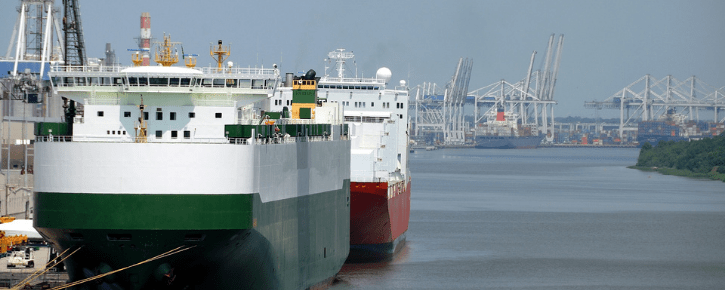
How to tune your IT system to boost productivity in your port
When a container port is operating at its highest productivity level it’s like a well-orchestrated symphony. Port vehicles, ocean-going vessels, trucks and trains all move in time and in tune. To achieve this masterpiece, you need a good conductor – your IT system.
Ports today enable vital supply lines for global goods and it’s an industry where every second has a price tag with success measured in throughput. Having a well-orchestrated IT system can boost productivity, help you hit targets and go some way to saving those expensive seconds.
The four interlinked IT elements that need to work in harmony
If the port is a symphony then your IT system is your conductor, though it’s not a single entity. In fact, it’s four interlinked elements that need to work in harmony – it’s your network, your hardware, your software and your vendors. If one of these isn’t performing to pitch, then it can cause the whole symphony to become a cacophony.
Let’s take these elements one by one and look at examples of when they run melodiously and other examples of when they hit dud notes.
Note perfect network – reliable connectivity to optimize port productivity
Providing the backbone to your IT system is your network. In a port you will most likely be running WiFi or perhaps 4G over private or public LTE. Some legacy ports may even still be working off low band.
A bad network doesn’t offer sufficient coverage, drops out or perhaps doesn’t have the bandwidth needed to run today’s data hungry applications. Your workforce is constantly interrupted when their devices lose connection and as a result their productivity drops
What you need is a reliable network your workforce can depend on. One that offers coverage from even the darkest corners of the deck or next to the biggest stack of containers. Looking at things like your access points can help. Read more in our article about connectivity in ports.
Songful software that’s fit for purpose
In a port environment, software is used primarily to track the movement of goods around the facility. Most will run some kind of terminal operating system (TOS), either a third-party application or one that’s built in-house.
Software that is outdated causes the whole operation to slow down and not perform to its full potential. In many cases where the software causes problems, a port has outgrown the solution it’s using so instead of enabling productivity it hinders it. Another issue could be poorly written software. These difficulties slow down the response times and hit throughput.
What you need is a well written TOS that is fit for purpose and doesn’t glitch or take time to process data. In addition, any software should support your future IT strategy, especially if you’re thinking about automation. Compatibility with other items in your IT system is also important. You need a network with enough bandwidth and the right hardware.
Harmonious hardware – reliable rugged computers
In a port environment hardware provides the interface between the workforce and the software. You’ll find the majority of hardware out on the deck installed in vehicles, but some may be handheld and, as automation increases, some are installed at the gates.
Bad hardware can be out of date models that aren’t powerful enough or have come to the end of their lives. They can glitch or run slow or lose connection, all causing frustration for employees.
What you need is reliable hardware that enables your workforce to work in comfort. Hardware that offers great user experience, runs your software smoothly and works with your network.
Read our guide about “How to choose and buy the right rugged devices for your business”
Virtuoso vendors
For many ports, vendors provide the network, software and/or hardware so you’ll probably work with several all at once. Vendors come in all shapes and sizes so here is some advice about what to look for and what to avoid.
The wrong vendor is only interested in the sale. They’re not concerned about your business issues nor how to address them. They’re not engaged enough to worry about what happens after they’ve delivered the goods. They just want their bucks.
Although not necessary the wrong vendor, a new entrant can come with challenges. They may lack experience either of your industry or the market all together. They may also take up a lot of your time.
What you need is a vendor that’s engaged and interested in your business. One that tries to understand your issues, helps you quantify the full cost and only then talks about the solution. A vendor that will be ready to help when you ring up months after the sale. And one that has previous experience of working in your sector, so they can share best practice with you.
Watch the video when Eric explains about how to choose the right vendor/business partner
The whole orchestra
When you have in place the best possible network, hardware, software and vendors you get a harmonious IT system that supports and boosts your port’s operations. If any one of the elements is out of sync, then things can go really wrong.
Working with the right vendors will help you get it right and at JLT we pride ourselves on the service we offer. To find out more about how we make sure our customers get the most from their rugged computers, get in contact with me or any of my team members.
Want to learn more?
We’re here to help and advise you on every aspect of rugged devices and industry data communications.
Please fill in the form and we will get back to you as soon as possible.

